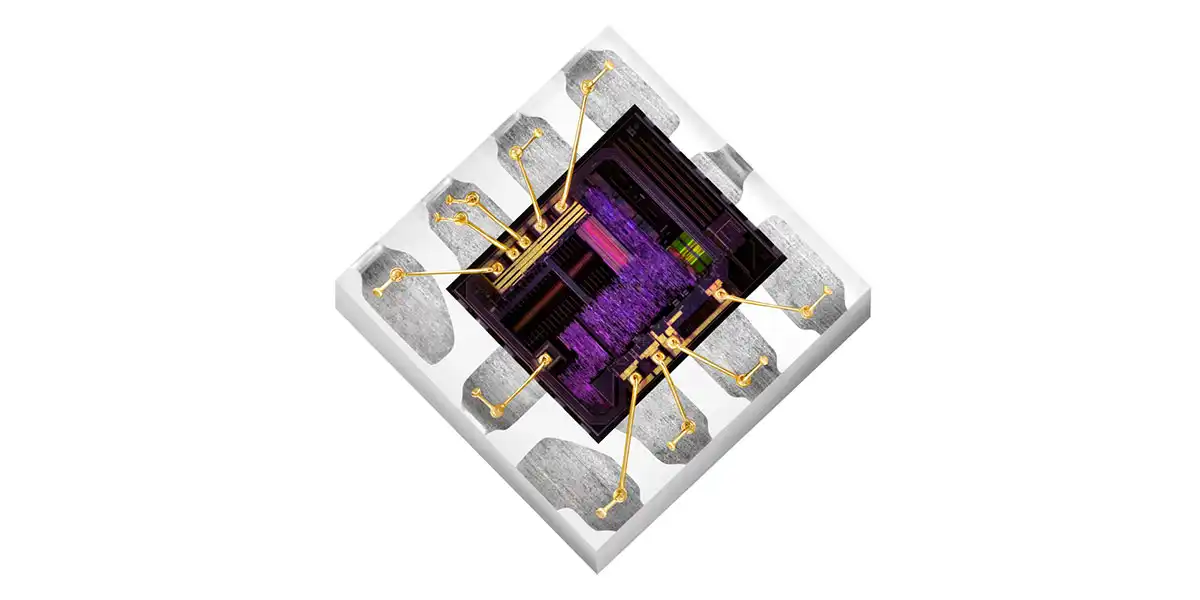An optical sensor that accurately detects UVB and ambient light offers new health and wellness capabilities for wearables and other mobile technology. The device, which also features patented infrared light suppression, was introduced last month by Integrated Device Technology (IDT), a San Jose-based global supplier of supplier of analog and mixed-signal semiconductor solutions for the communications, computing, consumer, automotive and industrial segments.
"This new sensor integrates two key features that can deliver exciting consumer experiences for cutting-edge mobile products like wearables and smartphones," said Uwe Guenther, product line director at IDT. "UVB detection is key for managing the health risks associated with sunlight, and the ALS technology's ability to accurately measure the intensity of ambient light assists in saving battery life by controlling display brightness. The tight integration of these capabilities helps developers create a more full-featured product while minimizing the bill of materials."
WHAT ARE OPTICAL SENSORS?
Optical sensors are electronic detectors that work on the presence or absence of light or infrared rays and convert the same into an electronic signal,
according to BCC Research analyst Sinha G. “They’re part of larger systems in which interpretation and analysis occurs to produce different results such as movement of an object, capturing of an image, and positioning of an object, among others. These larger systems integrate light sources, optical sensors, and measuring devices together. The whole setup is connected to an electrical trigger, with the trigger sensitive to light signal variation occurring within the respective light sensor.”
Optical sensors are used to measure changes from single or multiple light beams. Upon a change in the light beam(s), an optical sensor acts as a photoelectric trigger to increase or
decrease electrical output.
Sensors are an advanced technology and have seen many applications in industrial, military, automotive, and health care sectors, he says.
RISING PENETRATION OF SMARTPHONES IN GLOBAL MARKET
An optical sensor is one of the major components in a smartphone. Different types of optical sensors are used, including smart sensors, image sensors, and proximity sensors. With the rising penetration of smartphones globally, the market for optical sensors is expected to grow at a considerable rate. Sinha also says the rollout of advanced handheld devices with new features is also boosting the market for optical sensors. Smartphones use infrared (IR)-based proximity sensors to detect the presence of a human ear. These sensors are used for reducing power consumption by turning off the liquid crystal diode (LCD) backlight and disabling the touch screen.
The sensor, ZOPT2202, also supports "contextual awareness" in multi-sensor systems by detecting indoor/outdoor conditions, according to Guenther.
“The risks associated with UV rays—whether getting too much or too little—are well documented. Overexposure can lead to skin cancer, and underexposure can result in seasonal affect disorder (SAD) or low levels of Vitamin D,” Guenther adds. “The ZOPT2202 sensor accurately senses the UVA and UVB light spectrum, offering consumers a better understanding of their environment so they can monitor and avoid risks associated with UV exposure.”
FUTURE OUTLOOK AND EXPECTATIONS
According to Sinha, the optical sensor market is expected to experience robust growth in the forecast period with the gradual advent of technological advancement and the increased number of applications available in the military, automotive, and industrial sectors.
“Rapid growth of the telecommunications industry and the large number of upcoming business utilities are some of the major factors boosting the demand for sensors,” he explains. “The major trend driving the global optical sensor market is miniaturization and improved communication capabilities, which enables the integration of optical sensors into various devices and machines without compromising other functionalities.”
He adds that the proliferation of advanced electronic control systems has made sensors more accurate and reliable while increasing response time, robustness, communications capabilities, and efficiency. The continuous innovations and investments in research and development to meet changing consumer preferences has led “to improved fabrication techniques and enhanced sensing abilities at lower costs, thus driving market growth.”
Optical sensors are widely implemented in different sectors such as fitness and pharmaceuticals, health care, and medical. Due to increased demand for wearable technology along with further development of these devices, the application areas of sensors are anticipated to grow during the forecast period. Devices such as sleep sensors and activity monitors would find application largely in the health care and fitness sectors.
Moreover, demand for smart watches, hand-worn terminals, and heads-up displays will drive the infotainment and industrial sectors. In addition to this, optical sensors are widely used for monitoring body temperature and for diagnosis of complex diseases. These sensors have advanced design and are cost-effective; they can easily be fitted into portable medical devices. Considering all these factors, the impact of this driver is analyzed to be medium currently and is expected to become high in the near future.
The optical sensor market was valued at $291.6 million in 2014 and is expected to reach $971.8 million by 2020, growing at a five-year CAGR of 25.2% between 2015 and 2020.



